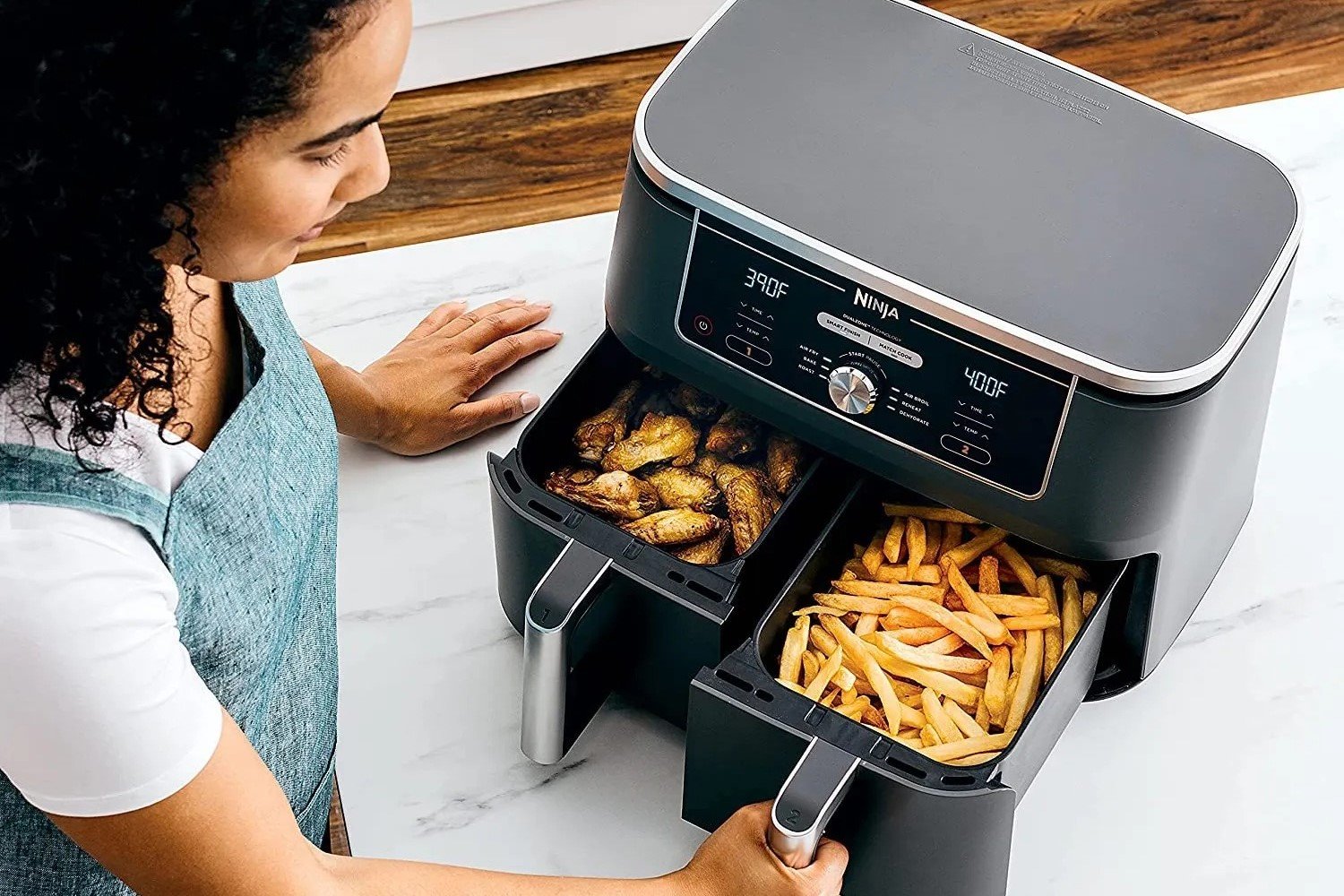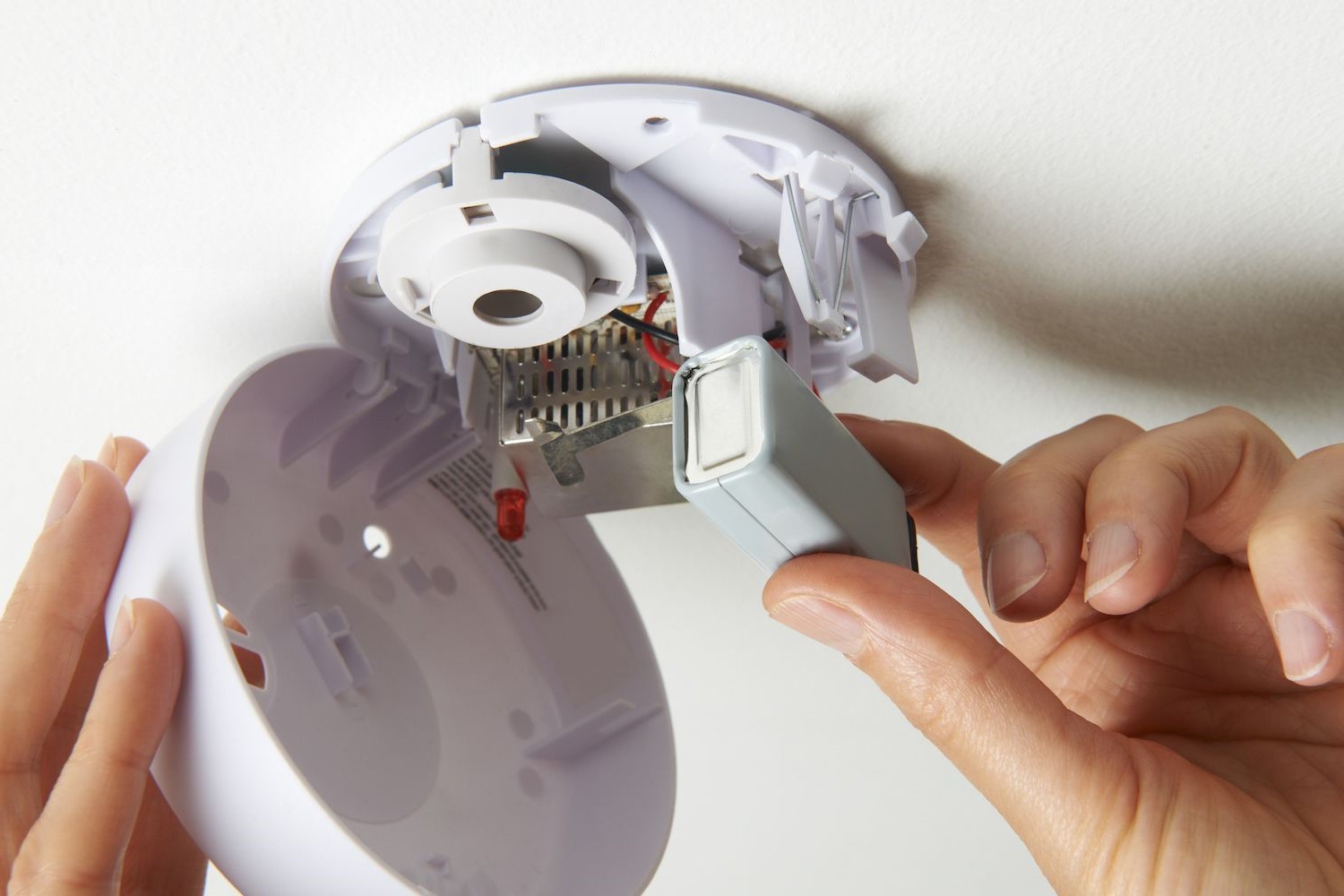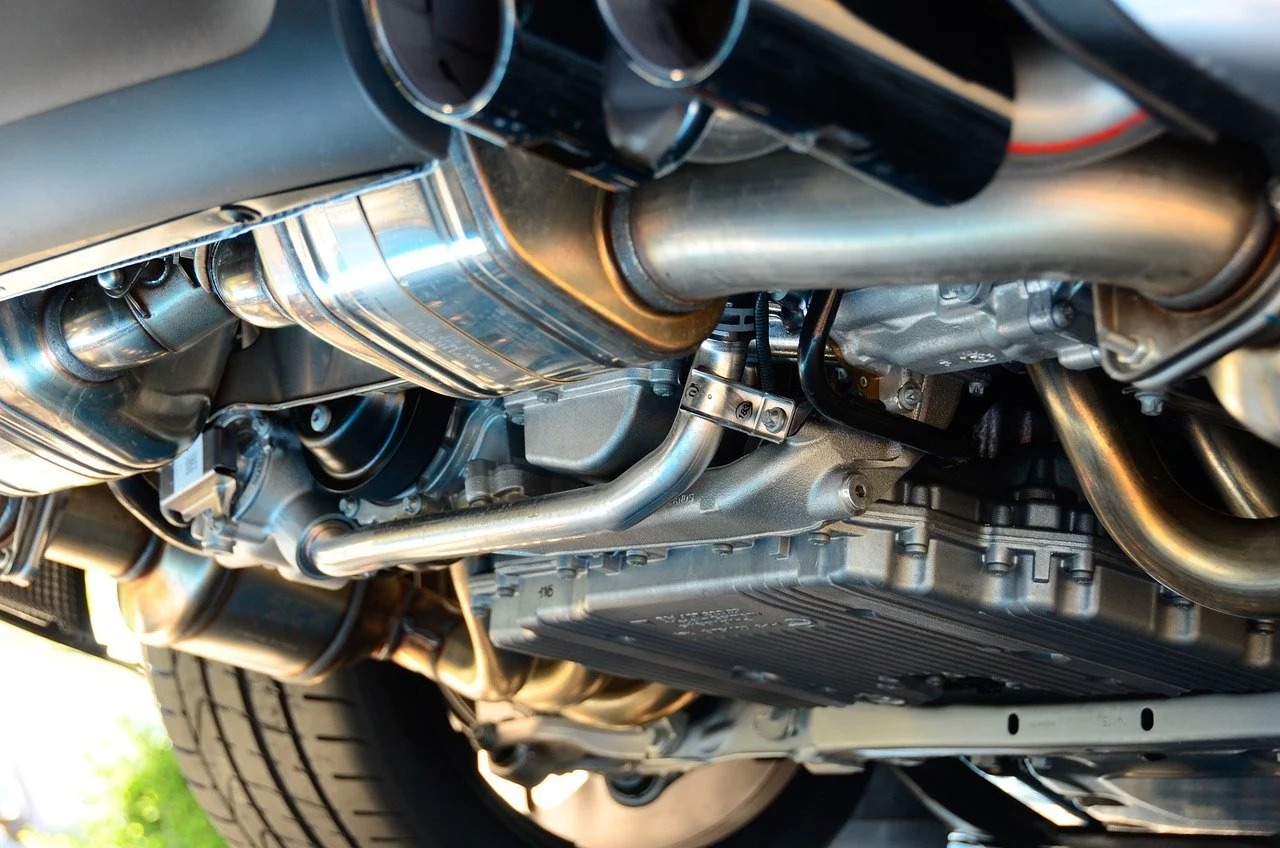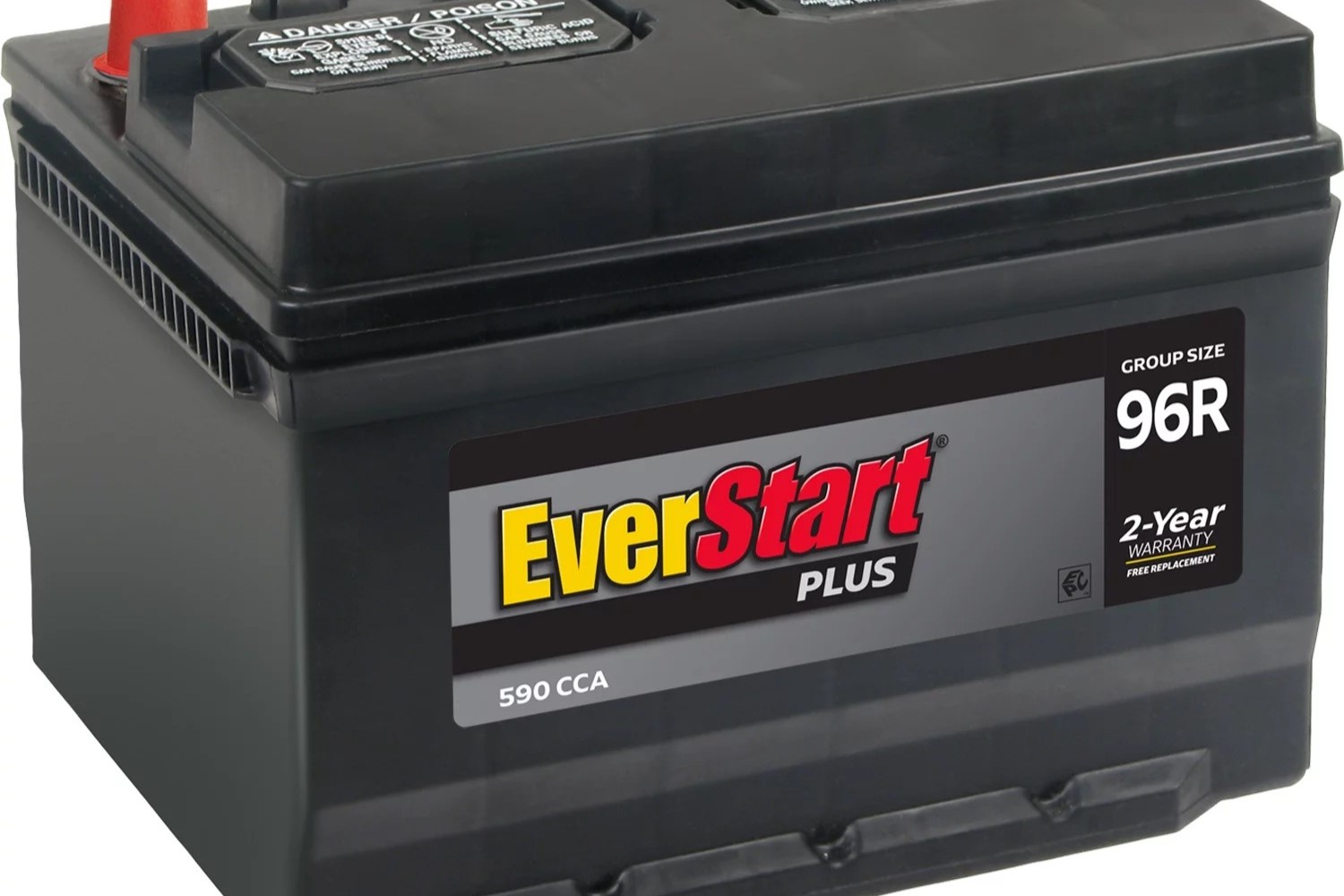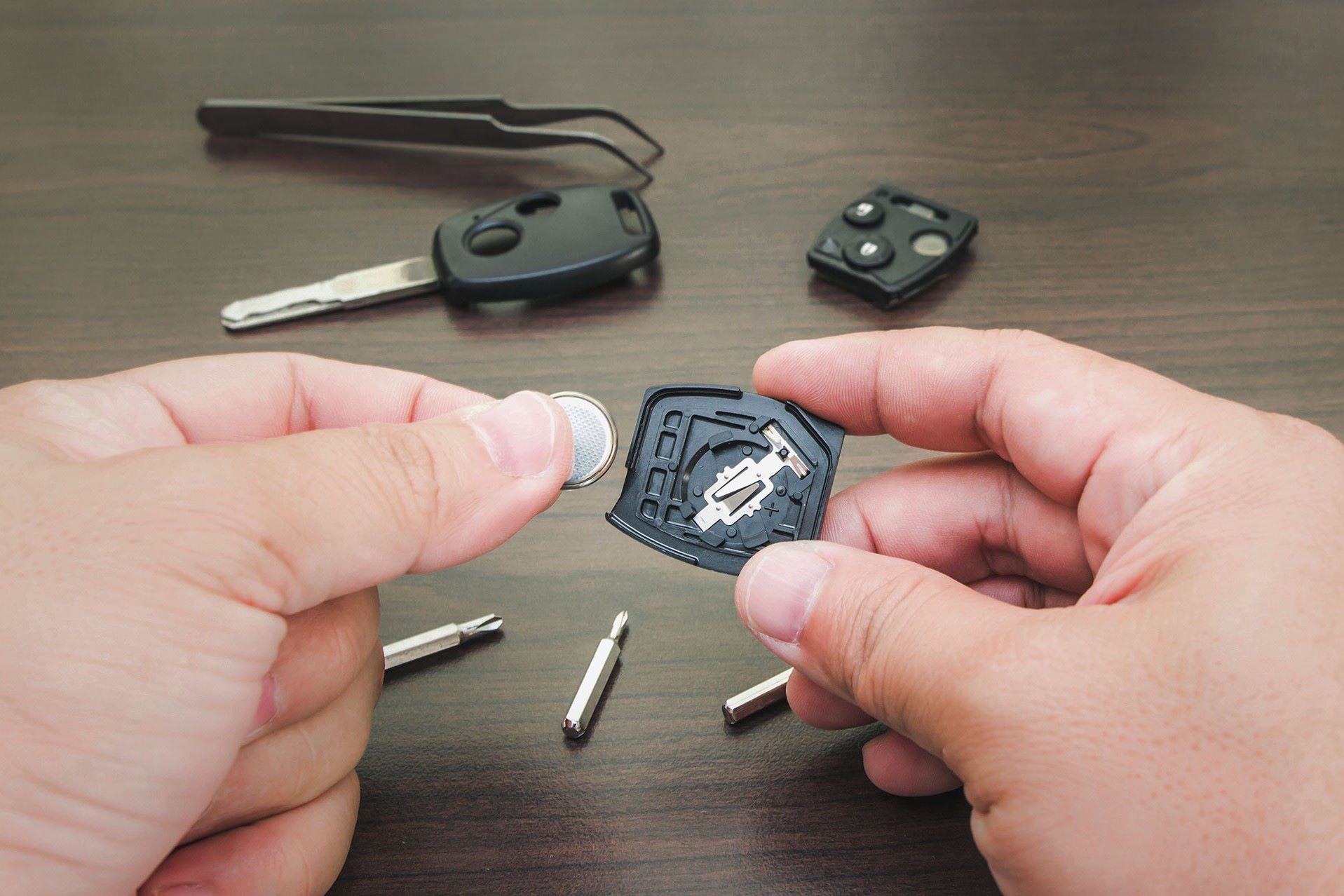Home>Technology and Computers>Revive Your Over-Discharged Ryobi 40 Volt Lawn Mower Battery With Quick Microcharges!
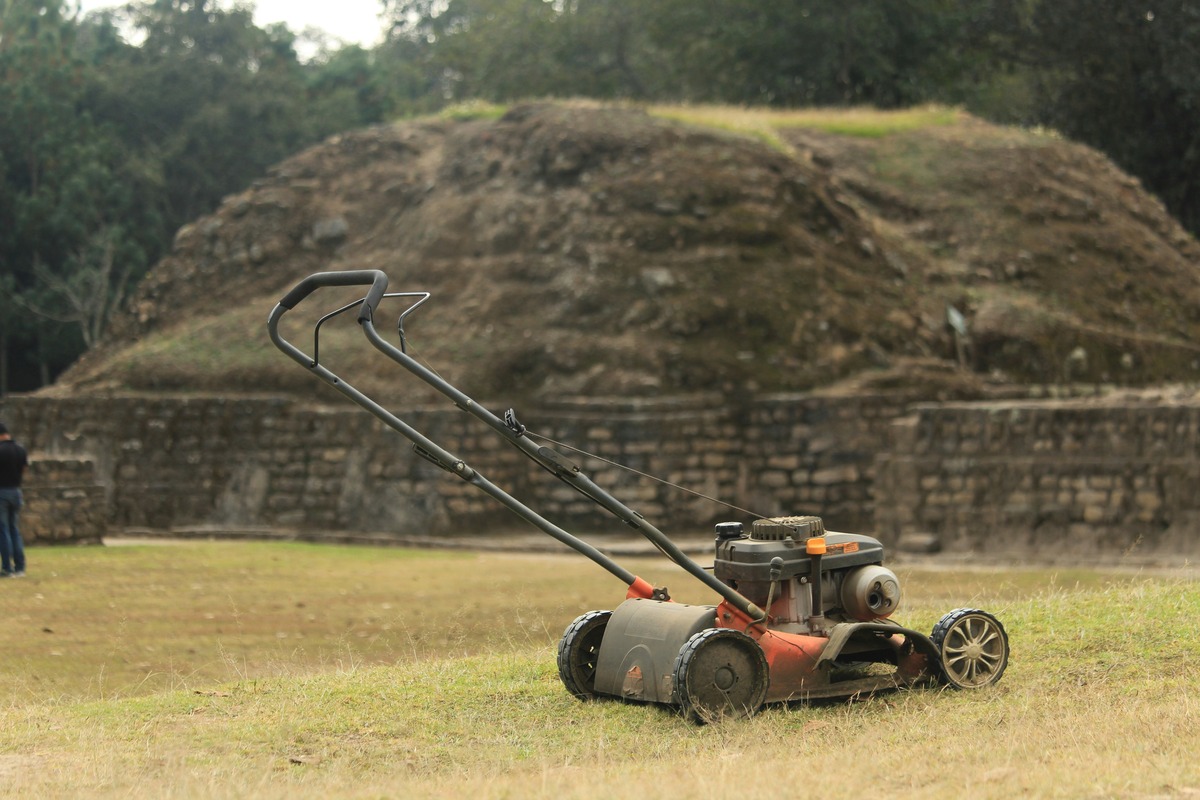

Technology and Computers
Revive Your Over-Discharged Ryobi 40 Volt Lawn Mower Battery With Quick Microcharges!
Published: February 12, 2024
Revive your over-discharged Ryobi 40V lawn mower battery using quick microcharges! Learn how technology and computers can help extend battery life.
(Many of the links in this article redirect to a specific reviewed product. Your purchase of these products through affiliate links helps to generate commission for Noodls.com, at no extra cost. Learn more)
Table of Contents
Introduction
Revive Your Over-Discharged Ryobi 40 Volt Lawn Mower Battery with Quick Microcharges!
Are you frustrated with a seemingly lifeless Ryobi 40-volt lawn mower battery that refuses to hold a charge? Before you consider replacing it, there's a potential solution that could breathe new life into your over-discharged battery – quick microcharges. This innovative technique has been gaining attention for its ability to revive seemingly dead lithium-ion batteries, offering a cost-effective and environmentally friendly alternative to purchasing a new battery.
In this comprehensive guide, we will delve into the world of over-discharged batteries, exploring the dangers they pose and the benefits of quick microcharges. You will learn how to implement this technique to potentially revive your Ryobi 40-volt lawn mower battery, saving you time and money while reducing electronic waste.
So, if you're ready to embark on a journey to revive your over-discharged Ryobi 40-volt lawn mower battery and give it a new lease on life, let's dive into the fascinating world of quick microcharges and discover how this method could be the solution you've been searching for.
Understanding over-discharged batteries
Over-discharged batteries occur when the voltage of a battery drops below the manufacturer's recommended level, typically due to prolonged usage without recharging. In the case of the Ryobi 40-volt lawn mower battery, over-discharge can occur if the battery is left unused for an extended period or if the mower is used beyond the battery's capacity.
When a lithium-ion battery, such as the one used in the Ryobi 40-volt lawn mower, becomes over-discharged, it can lead to irreversible chemical reactions within the battery cells. These reactions can cause the formation of copper shunts, which can lead to internal short circuits. Additionally, the electrolyte in the battery can break down, resulting in the formation of copper dendrites, which can further exacerbate the internal short circuits.
The consequences of over-discharged batteries extend beyond physical damage. Over-discharge can also lead to a phenomenon known as lithium plating, where lithium ions in the battery's anode plate out as metallic lithium. This can compromise the battery's capacity and performance, making it difficult to hold a charge.
Understanding the intricacies of over-discharged batteries is crucial when attempting to revive a seemingly lifeless battery. By recognizing the potential chemical and physical changes that occur within the battery, you can better appreciate the challenges involved in restoring its functionality. This understanding forms the foundation for exploring innovative techniques, such as quick microcharges, which aim to reverse the effects of over-discharge and potentially revive the battery to a usable state.
In the next sections, we will delve deeper into the dangers of over-discharged batteries and the benefits of quick microcharges, shedding light on the potential solutions for revitalizing your Ryobi 40-volt lawn mower battery.
The dangers of over-discharged batteries
Over-discharged batteries pose significant risks that extend beyond their immediate functionality. When a lithium-ion battery, such as the one found in the Ryobi 40-volt lawn mower, experiences over-discharge, it can trigger a cascade of detrimental effects that compromise the battery's integrity and safety.
One of the primary dangers of over-discharged batteries is the potential for irreversible chemical reactions within the battery cells. As the voltage drops below the manufacturer's recommended level, the battery becomes susceptible to internal short circuits, which can lead to thermal runaway and, in extreme cases, result in fire or explosion. These hazardous conditions are exacerbated by the formation of copper shunts and dendrites, which can puncture the separator within the battery, leading to catastrophic failure.
Furthermore, over-discharge can contribute to the phenomenon of lithium plating, where lithium ions in the battery's anode plate out as metallic lithium. This process compromises the battery's capacity and can result in reduced performance and increased internal resistance. As a result, the battery may struggle to hold a charge, leading to diminished runtime and overall inefficiency.
In addition to the physical dangers posed by over-discharged batteries, there are environmental and economic implications to consider. The premature failure of lithium-ion batteries due to over-discharge contributes to electronic waste, placing a strain on recycling and disposal systems. This not only impacts the environment but also represents a financial burden for consumers and businesses alike.
Recognizing the dangers of over-discharged batteries underscores the importance of proactive measures to mitigate these risks. By understanding the potential consequences of over-discharge, users can take steps to prevent the depletion of their batteries beyond safe levels, ultimately prolonging the lifespan of their electronic devices and reducing the environmental impact of premature battery failure.
In the following sections, we will explore the benefits of quick microcharges as a potential solution for addressing over-discharged batteries, offering insights into an innovative approach that could revive seemingly lifeless lithium-ion batteries, including the Ryobi 40-volt lawn mower battery.
The benefits of quick microcharges
Quick microcharges offer a promising solution for reviving over-discharged lithium-ion batteries, such as the Ryobi 40-volt lawn mower battery, by leveraging the principles of controlled, incremental charging. This innovative technique presents several compelling benefits that make it an attractive option for users seeking to extend the lifespan of their batteries and reduce electronic waste.
1. Enhanced Safety
Quick microcharges prioritize safety by employing low-current charging pulses to gradually reintroduce energy into the over-discharged battery. Unlike traditional charging methods that may pose risks when applied to severely depleted batteries, quick microcharges minimize the potential for thermal runaway and internal short circuits. By carefully managing the charging process, this approach mitigates the dangers associated with over-discharged batteries, offering a safer and more controlled method for battery revival.
2. Potential Battery Revival
One of the most significant benefits of quick microcharges is their potential to revive seemingly lifeless lithium-ion batteries. By administering controlled pulses of energy, this technique aims to reverse the detrimental effects of over-discharge, such as lithium plating and electrolyte breakdown. As the battery undergoes a series of microcharges, the gradual restoration of its chemical composition and electrical properties may lead to an improvement in capacity and performance, ultimately breathing new life into the battery.
3. Cost-Effective Alternative
Quick microcharges present a cost-effective alternative to replacing over-discharged batteries, offering users the opportunity to maximize the value of their existing battery assets. Rather than investing in a new battery, which can be a significant expense, implementing quick microcharges allows users to explore the potential for battery revival without incurring substantial costs. This approach aligns with sustainable practices by promoting the reuse of batteries and reducing the financial burden associated with premature battery replacement.
4. Environmental Sustainability
In the context of environmental sustainability, quick microcharges contribute to the reduction of electronic waste by extending the lifespan of lithium-ion batteries. By enabling users to potentially revive over-discharged batteries, this technique aligns with the principles of resource conservation and waste reduction. As a result, quick microcharges offer a proactive approach to mitigating the environmental impact of premature battery failure, fostering a more sustainable and responsible approach to battery management.
5. User Empowerment
Implementing quick microcharges empowers users to take proactive measures in managing their battery health and longevity. By gaining insights into the potential benefits of this technique, users can explore alternative solutions to address over-discharged batteries, reducing their reliance on conventional battery replacement practices. This sense of empowerment encourages users to actively engage in the maintenance and revitalization of their batteries, fostering a more sustainable and informed approach to electronic device ownership.
In summary, quick microcharges offer a range of compelling benefits, including enhanced safety, potential battery revival, cost-effectiveness, environmental sustainability, and user empowerment. By harnessing the advantages of this innovative technique, users can explore new possibilities for extending the lifespan of their lithium-ion batteries, including the Ryobi 40-volt lawn mower battery, while contributing to a more sustainable and responsible approach to battery management.
Steps to revive your over-discharged Ryobi 40 volt lawn mower battery
Reviving an over-discharged Ryobi 40-volt lawn mower battery requires a systematic approach that leverages the principles of quick microcharges to potentially restore its functionality. By following these steps, you can embark on a journey to breathe new life into your seemingly lifeless battery, offering a cost-effective and environmentally friendly alternative to replacement.
-
Safety First: Before initiating the revival process, prioritize safety by ensuring proper ventilation and a stable work surface. Additionally, use personal protective equipment, such as gloves and safety goggles, to safeguard against potential battery-related hazards.
-
Assessment: Begin by assessing the condition of the over-discharged battery. Check for any physical damage or signs of leakage, and ensure that the battery terminals are clean and free from corrosion. This initial assessment provides valuable insights into the overall state of the battery and informs the subsequent steps in the revival process.
-
Preparation: Prepare a suitable charging setup that allows for controlled, low-current charging pulses. This may involve using a compatible charger capable of delivering incremental energy to the over-discharged battery. Ensure that the charging environment is free from flammable materials and is well-ventilated to dissipate any heat generated during the charging process.
-
Incremental Charging: Initiate the revival process by administering quick microcharges to the over-discharged battery. This involves applying short pulses of low-current charging, typically lasting a few seconds, followed by brief intervals of rest. Repeat this cycle of microcharges and rest periods, monitoring the battery for any signs of excessive heat or abnormal behavior.
-
Observation and Patience: Throughout the revival process, closely observe the battery for any indications of progress, such as a gradual increase in voltage or a reduction in internal resistance. Exercise patience, as the effects of quick microcharges may take time to manifest, especially in severely over-discharged batteries.
-
Monitoring and Evaluation: Continuously monitor the battery's temperature and voltage during the microcharging cycles, ensuring that it remains within safe limits. As the revival process unfolds, evaluate the battery's response to the incremental charging, noting any improvements in capacity or stability.
-
Restoration or Replacement: Based on the outcomes of the revival process, assess whether the battery has shown signs of restoration. If the battery exhibits improved performance and holds a charge, it may be suitable for continued use. However, if the revival attempts yield minimal or no improvement, consider seeking professional assistance or exploring environmentally responsible disposal options for the battery.
By following these steps, you can engage in a proactive and systematic approach to potentially revive your over-discharged Ryobi 40-volt lawn mower battery using quick microcharges. This method offers a compelling opportunity to extend the lifespan of your battery, reduce electronic waste, and explore innovative solutions for sustainable battery management.
Conclusion
In conclusion, the journey to revive your over-discharged Ryobi 40-volt lawn mower battery with quick microcharges represents a compelling exploration of innovative techniques and sustainable battery management practices. By delving into the intricacies of over-discharged batteries, understanding the dangers they pose, and recognizing the benefits of quick microcharges, you have gained valuable insights into the potential solutions for revitalizing seemingly lifeless lithium-ion batteries.
The dangers of over-discharged batteries underscore the importance of proactive measures to mitigate risks and prevent premature battery failure. By acknowledging the potential chemical and physical changes that occur within the battery, users can adopt a more informed and responsible approach to battery management, ultimately contributing to a safer and more sustainable electronic device ownership.
The benefits of quick microcharges offer a promising outlook for addressing over-discharged batteries, presenting enhanced safety, potential battery revival, cost-effectiveness, environmental sustainability, and user empowerment. This innovative technique empowers users to explore alternative solutions to battery replacement, fostering a more sustainable and resource-conscious approach to battery management.
The systematic steps to revive your over-discharged Ryobi 40-volt lawn mower battery provide a structured framework for implementing quick microcharges, guiding you through a methodical process that prioritizes safety, assessment, preparation, incremental charging, observation, and evaluation. By following these steps, you can engage in a proactive and informed approach to potentially extend the lifespan of your battery, contributing to a more sustainable and responsible electronic device ownership.
As you embark on the journey to revive your over-discharged Ryobi 40-volt lawn mower battery, remember that patience and careful observation are key. The effects of quick microcharges may take time to manifest, especially in severely over-discharged batteries. By exercising patience and closely monitoring the battery throughout the revival process, you can maximize the potential for successful battery restoration.
In the spirit of sustainability and environmental responsibility, the exploration of quick microcharges as a potential solution for over-discharged batteries aligns with the broader efforts to minimize electronic waste and promote the reuse of valuable resources. By considering alternative approaches to battery management, such as quick microcharges, you are contributing to a more sustainable and conscientious electronic device ownership, fostering a positive impact on the environment and the community at large.
In essence, the journey to revive your over-discharged Ryobi 40-volt lawn mower battery with quick microcharges represents a proactive and empowering endeavor, offering a compelling opportunity to extend the lifespan of your battery, reduce electronic waste, and explore innovative solutions for sustainable battery management. As you embrace this journey, you are not only revitalizing a seemingly lifeless battery but also contributing to a more sustainable and responsible approach to electronic device ownership, embodying the principles of resource conservation and environmental stewardship.
